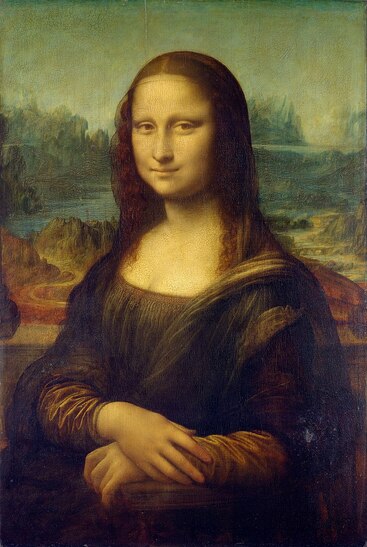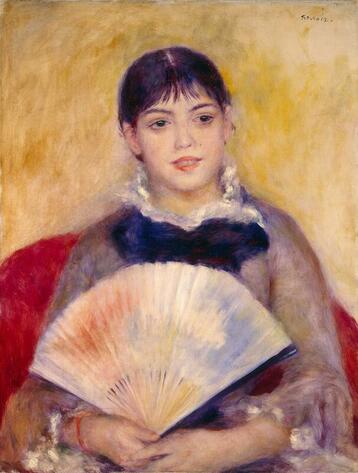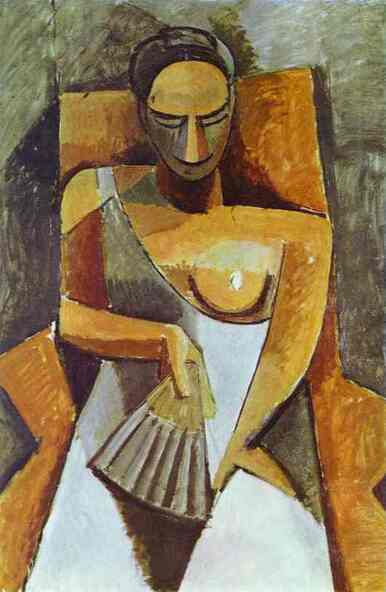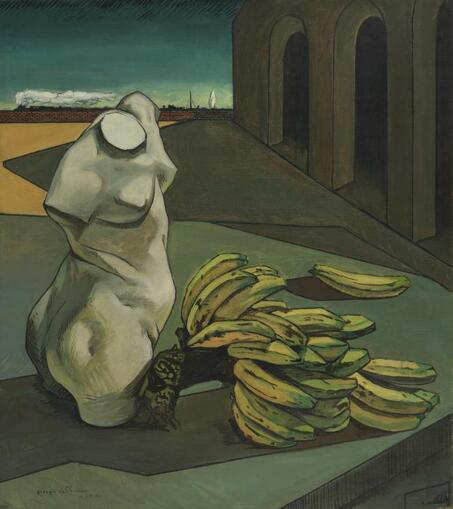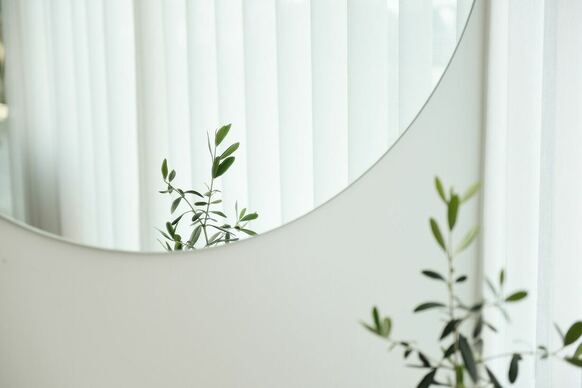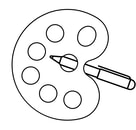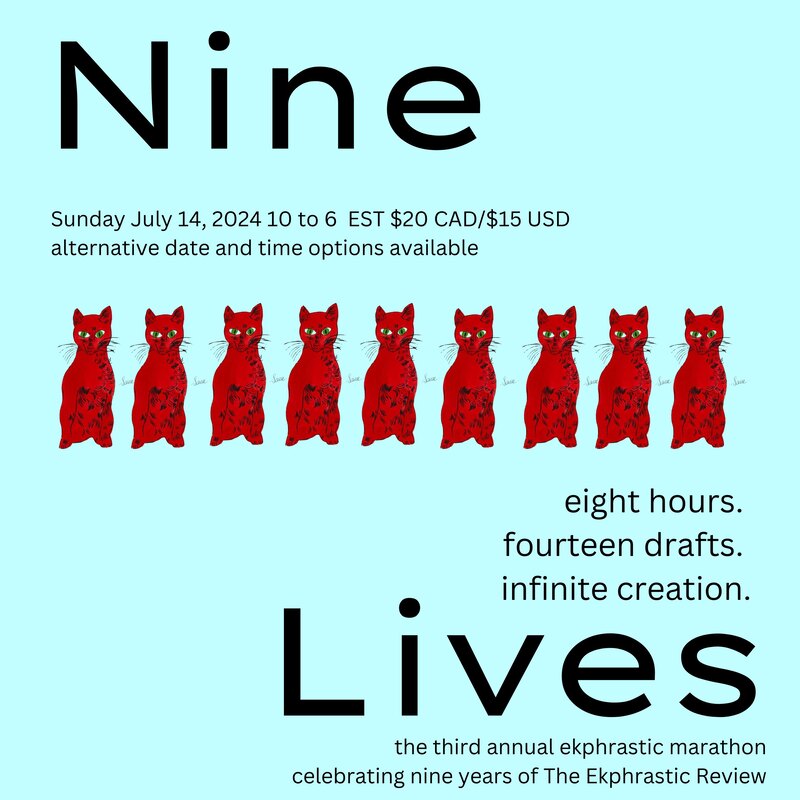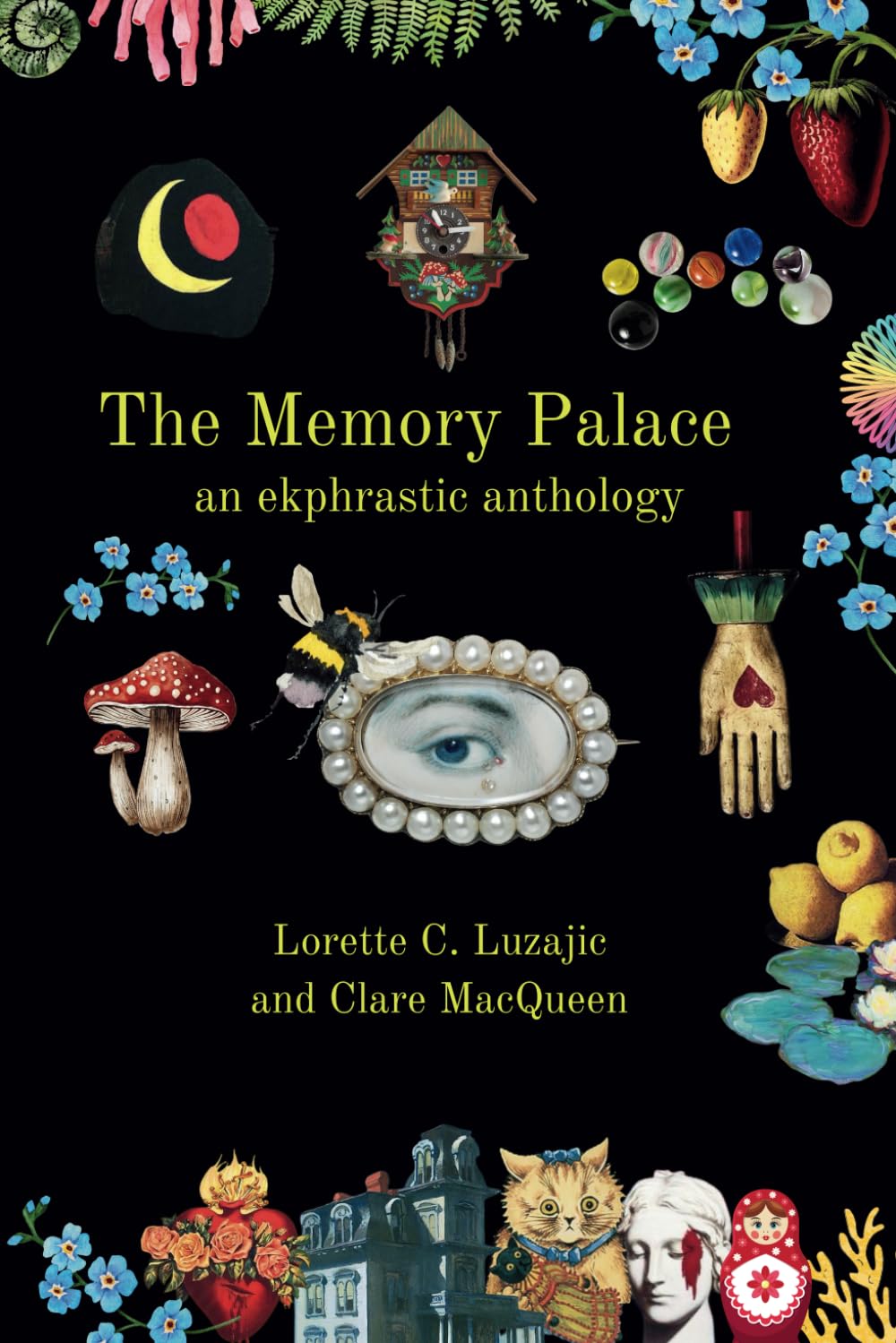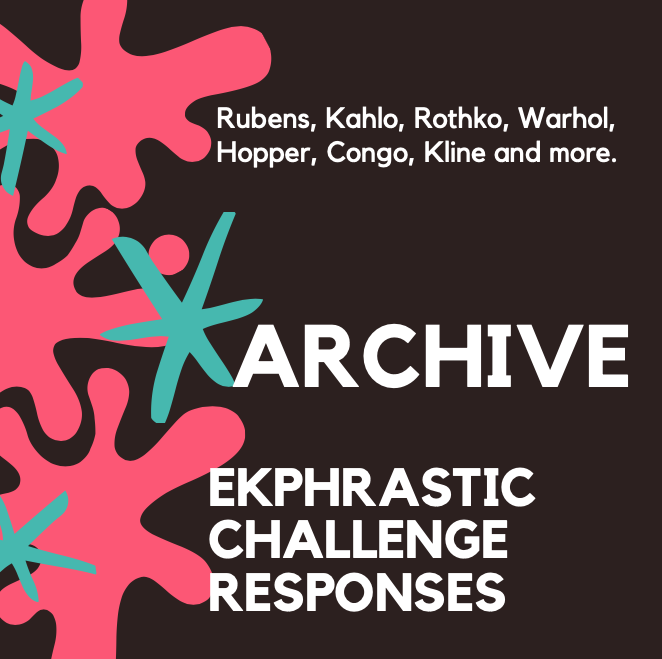|
Mona Lisa (c.1503-1507) Leonardo da Vinci Sitter: My maiden name was Gherardini. Had I still retained that claim, eternal fame might not have been my lot. My husband’s name means jocund, happy, never ever sad. "La Giaconda"; double meaning, glad by name, so must be glad by nature. Same in French, "joconde," whichever way you frame it: "jollity," whichever way you add. So come on Leonardo, make me smile. Amuse your muse, do something to beguile and "keep me full of merriment" to chase away my melancholy, also while away the time. So bring me music. I’ll comply and try to keep a smiling face. Artist: An aerial perspective would decrease the space between this muse and background – lake and mountains - merge them into one opaque scene, nature harmonized and of a piece. This natural design would then release her shoulders, place her calmly. I can fake her sweet demeanour, can contrive to take perception to belief. But this caprice for entertainment makes me want to scream in rima alternata. Well, perhaps sfumato might suffice to make her seem, through chiaroscuro, facially to lapse into a sphinx-like smile, appear to dream of secrets older than the rocks, perhaps? Girl with a Fan (1881) Pierre-Auguste Renoir Sitter: Pierre painted a scene from father’s bar, "Le Grenouillere," some time ago, so why return to paint my picture now? I’ll die of boredom. Oh! So hot indoors so far this morning, need to be outside. Mama insists that right away I go and try some dresses on, but father says the high- necked grey, because it suits his little star. I should have worn the blue and white stripe: cool and smooth, like pebbles deep inside a pool and crisp, like beach chairs down at Juan- les- Pins, or table cloths mama puts out for meals in le jardin. But do I need this fan? the blue and white should feel like fresh air feels. Artist: It doesn’t really matter what she wears. It’s Alphonsine Fournaise’s carefree pose, her unaffected youthful charm – just those few fleeting moments frozen - that one cares to capture, innocent, naive. One dares to use an ordinary muse, and chose this girl’s un-classic features, I suppose because I sense some fresh awareness there. But on reflection? No. The greenish-grey the child’s complied by wearing, doesn’t say those things about her. Maybe lapis blue would hint at something wistful in her eyes? A Venus, hearing soft seductive sighs of wavelets curling round her feet anew? Woman with a Fan (1908) Pablo Picasso Sitter addressing Alphonsine Fournaise: And now you see me, Alphonsine. The age- old woman whom you’ve just been listening to. Perhaps you think my head distorted, caged inside a visor’s nasal. Heavy too: its oval forehead, bulbous, over-sized, is pushing outwards, downwards. Thus, I rest my face in Faiyum shadow, leaden-eyed. No youthful bloom. No wistful look. Oppressed. Listen now, and hear my self-composure. I am all the "Labyrinths and Paths with Thunder": earth and fire and air’s exposure. Now Idoto, water goddess; herewith sanctified by oilbean, python, turtle, tortoise. Deified by great Okigbo, soldier-poet, priest incarnate. Tribal mask of Mother Nature known to Igbo. Artist: Her muted palette makes you feed on form. In refutation of mimetic art, this Amazon’s constructions are the norm of basic laws of geometrics; squares and circles, cylinders and cones, not fixed, but shifting images fragmented. There’s acknowledgement to Fetish, but remixed. Perceived as "primitive," the ancient mask has much to teach the Western "civilized." Authentic, Fundamental Life. The casque I gave her for her headwear symbolized her earthy power – terracotta – then the shape inverted for her eyebrows, and her wide closed eyes, allows her to ascend the plane, recede the fan in her right hand. The Uncertainty of the Poet (1913) Giorgio de Chirico Artist: Sometimes, when wandering alone, a "strange sensation" overtakes me. Then I see the world in shades of Nietzsche grey. Do we believe without a reason in a range of value systems? Do I rearrange for Art’s sake laws of credibility? A barren square, a fractured statue – she is headless – meaning empty page? Arrange an Epiphanic Moment! Then, my train of thought, (seen steaming in the background), bound for Arte Metafisica, wonders how these twenty-three bananas should remain so controversial. Hasn’t it been found the metaphysics’ art is molto NOW? Sitter: I’m Aphrodite’s headless torso. That implies I write of love in Grecian tropes. No brainer. That takes care of why and what, but what about to whom and where? One hopes it covers when. And what about the shape of poems? Possibly a sort-of square could quite well mean a Sonnet. Could I scrape a Villanelle or Terza Rima? Bare- ly though, Sestina. What of colour, then? Does virgin white mean writer’s block? I ought to add a dash of blackish. How and when? This writing business needs a bit of thought. Suppose his train of thought went off the rails, and chimed un-rhyming? What would that entail? Stella Pye: Self-Portrait in Green Sitter: My husband’s daughters scan me through his eyes, appraising gazes from their mother’s face. I wonder what they see, and in this case, I’d understand the reasons for their "Whys?" and shouldn’t be surprised, should they despise a woman writing sestets interlaced, a nutcase, sometimes gazing into space, a distant person. Something else besides: Perhaps they see an arid landscape, quite denuded of "do you remember whens?," insider jokes and silly songs. To show my "other" self in halfway-decent light, I might need someone like Rossetti, then again, perhaps someone I know. I know, Artist: I’ll paint my picture through my father’s eye, (he won’t disdain my asymmetric face) and dress myself in green, to signify my gaucheness, "green as grass," and then I’ll place myself before my garden background, green on green. Some better metaphors are new- ness, freshness, germinesse. I may be seen in any sense of greening; someone who is pensive, concentrating on a sound beyond immediacy of singing birds, to disremembered cadence newly found, the fertilizer for unwritten words. An unknown poet wearing unripe dress, still incomplete in incompletedness. Stella Pye The self-portrait that inspired Stella Pye's final poem is imaginary, and the image shown is a placeholder for illustrative purposes. These works are from Stella Pye's upcoming manuscript, Talking Pictures. After retiring, Stella Pye earned her Creative Writing M.A. and PhD at home in the U.K. at the University of Bolton, where she is a visiting lecturer. Her poems have been published in Stand, P&A, The Spectator, Able Muse and Poet and Geek. She is a reviewer for Stand.
0 Comments
Your comment will be posted after it is approved.
Leave a Reply. |
The Ekphrastic Review
COOKIES/PRIVACY
This site uses cookies to deliver your best navigation experience this time and next. Continuing here means you consent to cookies. Thank you. Join us on Facebook:
July 2024
|
